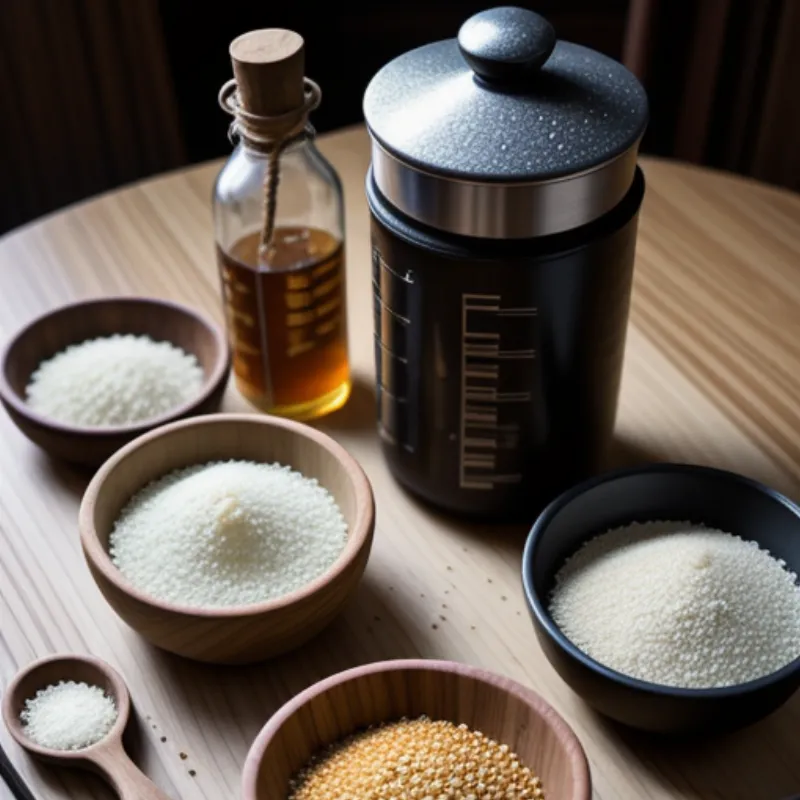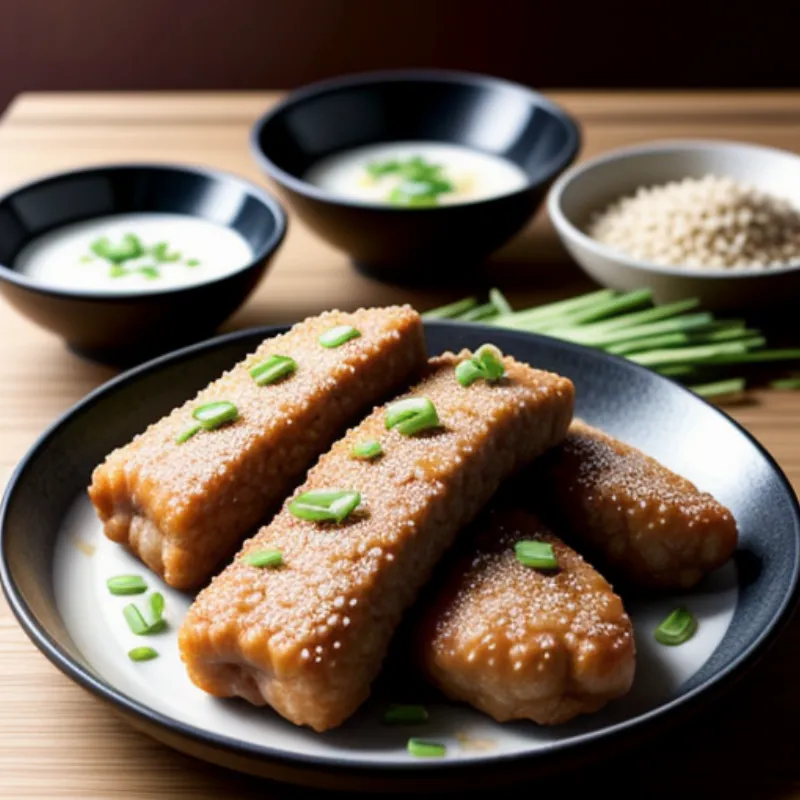Makgeolli sauce, a unique condiment born from the heart of Korean cuisine, offers a delightful balance of sweet, savory, and tangy flavors. This versatile sauce, inspired by the milky rice wine it’s named after, adds a depth of flavor to a variety of dishes. Whether you’re a seasoned chef or a curious home cook, preparing this sauce is a culinary adventure worth embarking on.
Unveiling the Magic of Makgeolli Sauce
Imagine a sauce that encapsulates the subtle sweetness of rice wine, the umami punch of fermented soybean paste, and a refreshing citrusy twist – that’s the magic of Makgeolli sauce. This condiment, relatively unknown outside Korea, deserves a spot on your culinary palette.
Its versatility is truly remarkable. Drizzle it over crispy tofu, toss it with your favorite noodles, or use it as a marinade for grilled meats – the possibilities are endless.
Crafting Your Homemade Makgeolli Sauce
Making your own Makgeolli sauce at home is easier than you might think. Let’s dive into the recipe:
Ingredients: Your Flavorful Arsenal
Main Ingredients:
- 1/2 cup Makgeolli (Korean rice wine) – Substitute with dry sherry or white wine if needed
- 1/4 cup Gochujang (Korean chili paste)
- 2 tablespoons Soy sauce
- 1 tablespoon Honey
Enhancing the Flavors:
- 1 clove Garlic, minced
- 1 teaspoon Sesame oil
- 1/2 teaspoon Gochugaru (Korean chili flakes) – Optional, for added heat
- Pinch of Black pepper
Gathering Your Culinary Tools
- Small saucepan
- Whisk
- Measuring spoons and cups
- Jar for storing
Step-by-Step Guide: Your Sauce-Making Journey
- Combine the Ingredients: In your saucepan, whisk together the makgeolli, gochujang, soy sauce, honey, garlic, sesame oil, gochugaru (if using), and black pepper until well combined.
- Simmer and Thicken: Place the saucepan over medium heat and bring the mixture to a gentle simmer. Cook, stirring occasionally, for about 5-7 minutes, or until the sauce slightly thickens.
- Adjust to Your Liking: Taste and adjust the seasoning as needed. If you prefer a sweeter sauce, add a touch more honey. For a tangier kick, a splash more makgeolli will do the trick.
- Cool and Store: Remove the sauce from the heat and let it cool completely. Transfer it to a clean jar and store it in the refrigerator for up to 2 weeks.
Tips for Makgeolli Sauce Perfection:
- Choosing Your Makgeolli: Opt for unpasteurized makgeolli for a richer flavor. If unavailable, dry sherry or white wine can be used as substitutes.
- Gochujang Variations: Different brands of gochujang have varying levels of spice and sweetness. Adjust the amount of honey and gochugaru in the recipe based on your preferred taste.
- Texture Preferences: For a smoother sauce, strain it through a fine-mesh sieve after cooking to remove any garlic or chili flakes.
 Ingredients for Makgeolli Sauce
Ingredients for Makgeolli Sauce
Unveiling the Culinary Versatility of Makgeolli Sauce
Now that you’ve mastered the art of making makgeolli sauce, let’s explore its incredible versatility:
1. A Dipping Delight:
- Korean Fried Chicken: The sweet and spicy notes of the sauce perfectly complement the crispy exterior of Korean fried chicken.
- Mandu (Korean Dumplings): Dip steamed or pan-fried mandu in makgeolli sauce for an explosion of flavors.
2. Elevate Your Noodle Game:
- Bibimbap: Drizzle a generous amount of makgeolli sauce over bibimbap, a colorful and flavorful Korean rice dish, for an extra layer of savoriness.
- Japchae (Glass Noodles): Toss your japchae with makgeolli sauce for a unique twist on this classic Korean noodle dish.
 Korean Fried Chicken with Makgeolli Sauce
Korean Fried Chicken with Makgeolli Sauce
3. Meat Marinades and Glazes:
- Bulgogi (Korean BBQ Beef): Marinate thinly sliced beef in makgeolli sauce for a few hours or overnight before grilling for a flavorful and tender bulgogi experience.
- Grilled Chicken or Pork: Brush your grilled chicken or pork with makgeolli sauce during cooking for a deliciously glazed and flavorful finish.
FAQs: Answering Your Makgeolli Sauce Queries
1. Can I make makgeolli sauce without alcohol?
While the makgeolli adds a unique depth of flavor, you can omit it for a non-alcoholic version. Substitute it with an equal amount of chicken or vegetable broth and increase the honey by 1/2 tablespoon to compensate for the sweetness.
2. How spicy is makgeolli sauce?
The spiciness of the sauce can be adjusted to your liking. If you prefer a milder flavor, start with 1 tablespoon of gochujang and gradually add more if desired. You can also omit the gochugaru flakes for a less spicy sauce.
3. What if I don’t have all the ingredients?
Feel free to get creative with substitutions! If you don’t have gochugaru, you can use a pinch of red pepper flakes for added heat. If you’re out of honey, brown sugar or maple syrup can be used as alternatives.
Conclusion: Embark on Your Makgeolli Sauce Adventure
Making your own makgeolli sauce at home is a testament to the joy of exploring new flavors and culinary traditions. This versatile sauce, with its perfect balance of sweet, savory, and tangy notes, is sure to become a staple in your kitchen.
So, gather your ingredients, follow this simple guide, and embark on your makgeolli sauce adventure. Don’t forget to share your culinary masterpiece with us in the comments below!
